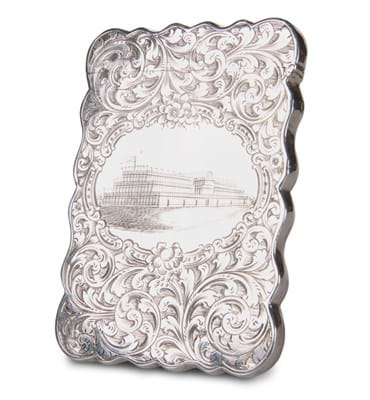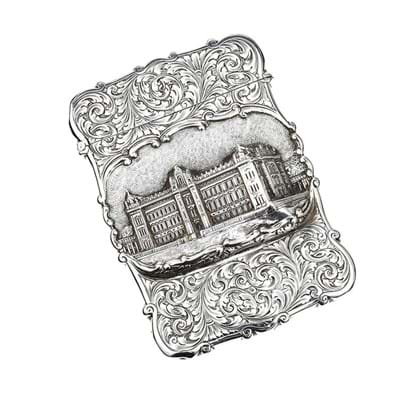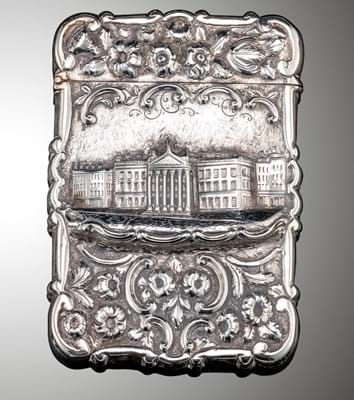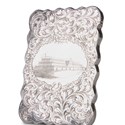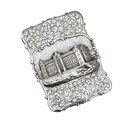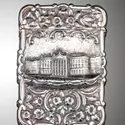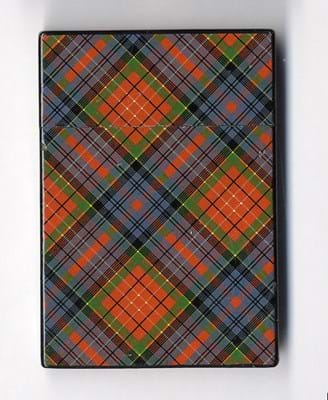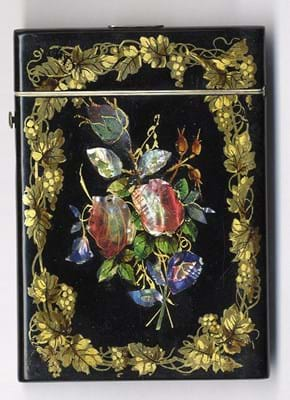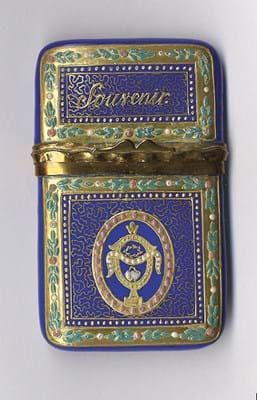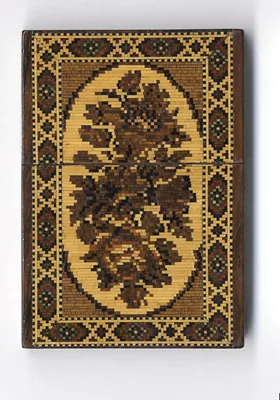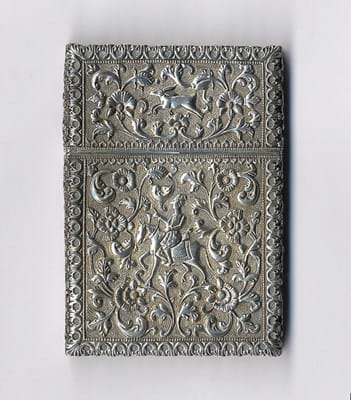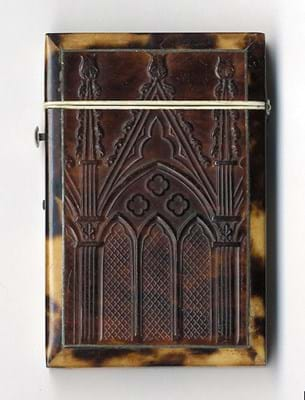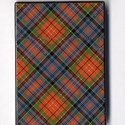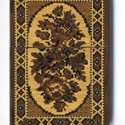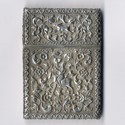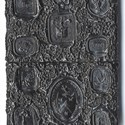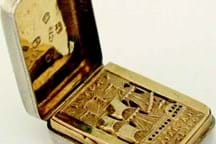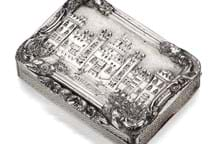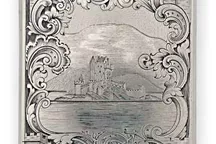"To the unrefined and underbred, the visiting card is but a trifling bit of paper; but to the cultured disciple of social law, it conveys a subtle and unmistakable intelligence. Its texture, style of engraving, and even the hour of its leaving combine to place the stranger, whose name it bears, in a pleasant or a disagreeable attitude..."
As this extract from Our Deportment, Or the Manners, Conduct and Dress of the Most Refined Society by John H. Young, 1881, so wonderfully illuminates, the visiting or calling card was an essential accessory to any proper Regency or Victorian lady or gentleman. These diminutive cards, supplied by the local printer in small batches, served not just as a letter of introduction or aide memoire, but as an indicator of social class and good manners.
And the cases in which they were carried were status-enhancing accessories too.
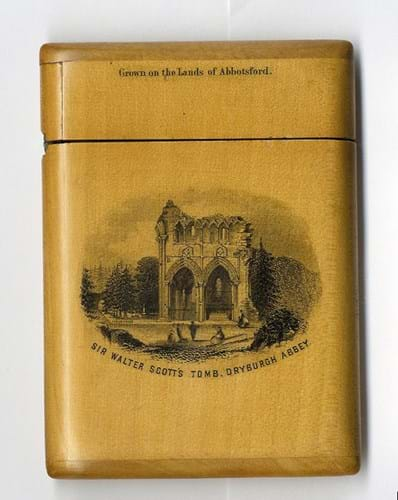
A Mauchline card case, of sycamore Grown on the lands of Abbotsford and transfer printed with Sir Walter Scott's Tomb Dryburgh Abbey, 4.5in (11cm) high. In fine condition, it sold for £80 at Mellors and Kirk.
The etiquette of leaving visiting cards was played out in the drawing rooms of middle class households in Europe, Russia and North America for more than a century from the 1820s. The ritual was surprisingly sophisticated, as explained in the pages of Rules of Etiquette and Home Culture or What to do and How to do it, a manners book published in Chicago in 1886.
"Callers should always be provided with cards. The cards of unmarried and married men should be small. For married persons a medium size is in better taste than a large card. The engraving in simple writing is preferred, and without flourishes."
It continues thus: "A gentleman should carry cards loose in a convenient pocket; but a lady may use a card case. No matter how many members of the family you call upon, you send in but one card. Where servants are not kept, and you are met at the door by the lady herself, of course there is no use for a card. If you call upon a friend who has a visitor, send in but one card; but if they are not at home, leave a card for each.
"A card may be made to serve the purpose of a call. It may be sent in an envelope, or left in person. In the latter case, one corner should be turned down if for the lady of the house. Fold the card in the middle if you wish to indicate that the call is on several, or all of the members of the family. Leave a card for each guest, should any be visiting at the house."
Above all there was a rigid distinction to be made between business and visiting cards. Crude commerce was not to be mixed with pleasure and it was considered very poor taste to use a business card when making a social call. A business card, left with the servants, would imply that the call had been to collect a bill or discuss a pecuniary matter rather then to exchange social pleasantries. Besides, business cards were also used by the working classes and common tradespeople…and that would never do.
So what happened to the visiting card and, in turn, the card case?
The once-important social custom of leaving cards persisted into the 20th century but had faded before the advent of the Second World War. By then the business card was king.
What Do People Collect?
While most card cases assume a standard form - a narrow rectangular box with a lid that slips on and off, or is hinged - it is the almost limitless variations and their ease of display that make them so collectable.
Mother-of-pearl and tortoiseshell are most common (a Birmingham directory of 1873 lists 38 mother-of-pearl, tortoiseshell and ivory workers producing visiting card cases to meet the demand), but card cases provide in miniature the full gamut of techniques, styles, materials and fashions that were popular in the decorative arts during the Regency, Victorian and Edwardian periods.
A remarkable number of different mediums were included: tooled kid leather from Morocco, pierced and carved bone and ivory exported to the West from Canton (China) and Vizagapatam (India), sandalwood from the Middle East, French porcelain, mauchline and tartan wares from Scotland, Tunbridgeware, shagreen (sharkskin), papier-mâché, needlework, abalone, filigree, embossed and engraved silver and silver gilt, EPNS, gutta percha, lacquer and penwork.
Often different materials and techniques, such as leather and petit point needlework, tortoiseshell, silver and mother-of-pearl, are seen in combination.
The Market
It gives some idea of the accessibility of this collecting area that most card cases sell at prices from £30 to £400. But not all are quite so affordable.
The Rolls-Royces of card cases are the so-called castle tops, made in silver and engraved or die-stamped with British landmarks. Many were made by the 'toy' makers of Birmingham.
Nathaniel Mills was the most prolific maker, but Taylor and Perry, Joseph Wilmore, Yapp and Woodward, Hilliard and Thomason, Frederick Mason and George Unite are other less familiar names.
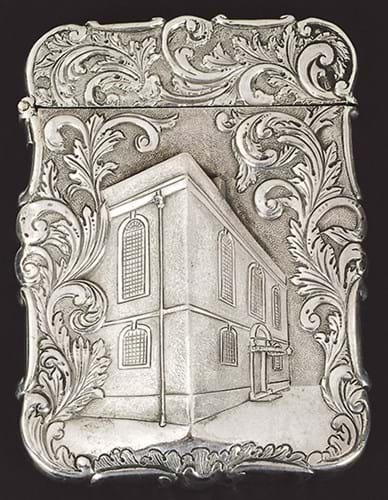
A Victorian silver card case die stamped with a view of the Bevis Marks Synagogue in London by Nathaniel Mills, Birmingham 1845 sold by Dreweatt Neate, Donnington Priory salerooms in 2005 for £8000, an auction record for a castle-top card case at the time.
The variety of topographical scenes suggest they were marketed as tourist souvenirs for mid 19th century honeymooners and day-trippers. And because some destinations were more popular than others, to collectors of castle-top cards, subject matter is everything.
Accordingly, while examples decorated with St Paul's Cathedral, Windsor Castle, Kenilworth Castle and York Minster can be purchased in the £700-1000 region, more unusual subjects count double, or more.
A great rarity was seen at Dreweatt Neate of Donnington Priory in July 2005. The Bevis Marks Synagogue in London was built by Joseph Avis, a Quaker, for the Sephardic Jews and opened in 1701. It is the oldest synagogue still in use in Britain, although when Nathaniel Mills made a card case depicting an exterior view of the building in 1845 it was perhaps as a special commission rather than a commercial line. It sold at £8000, eight times its estimate.
The price was an auction record at the time for a silver castle-top card case and can scarcely be matched in other mediums, save perhaps some of the rarest and most sought-after card cases made in Japanese lacquer.
Further Reading
Visiting Card Cases (Antique Pocket Guides) by Noel Riley. ISBN-13: 978-0718825492


